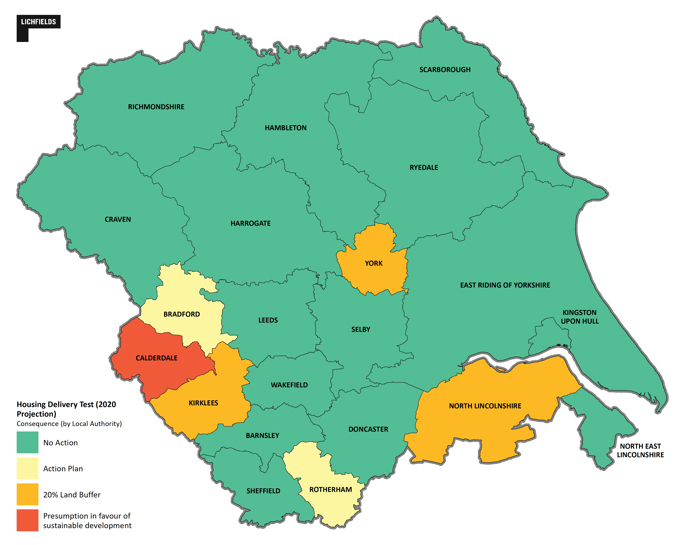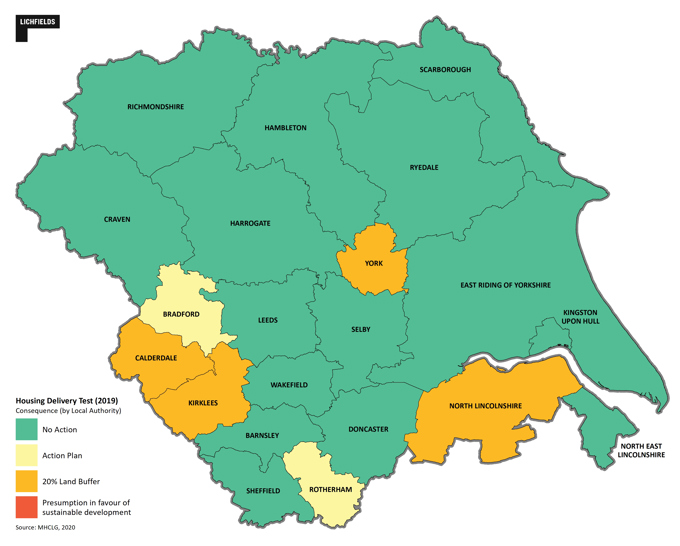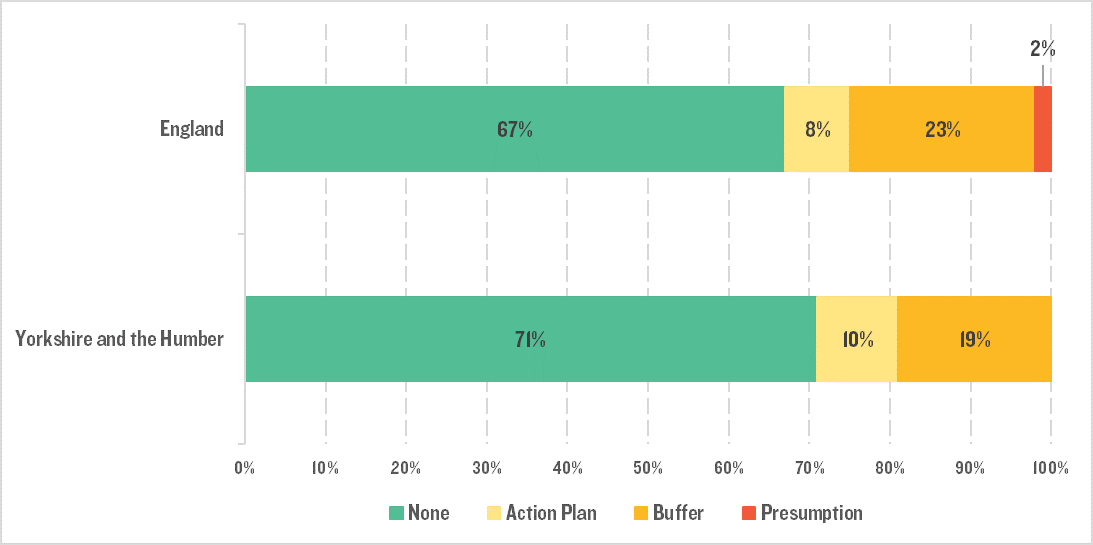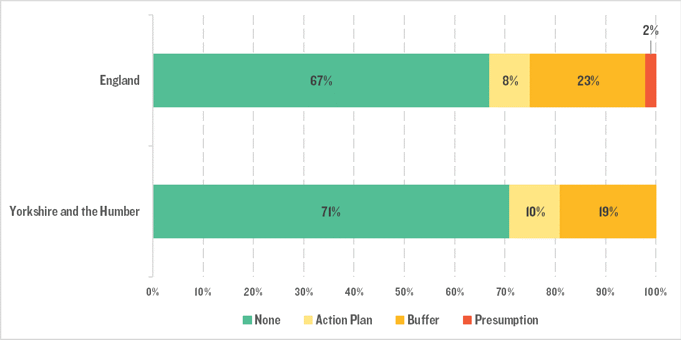
Housing Delivery Test 2019: Yorkshire and the Humber
Anna Turton
21 Feb 2020
The Housing Delivery Test provides a snapshot of national and regional housing delivery in 2019 against the number of homes required over a rolling 3-year period. It also allows progress from 2018 to be monitored and changes predicted going forward. Crucially, it is more than just a monitoring tool and has serious implications for many districts in Yorkshire and the Humber, with escalating planning sanctions applied depending on the scale of any shortfall.
Yorkshire and the Humber Results
Key 2019 results for the Yorkshire and the Humber region published by the Government this month are:
- 71% of Yorkshire and the Humber authorities are currently delivering sufficient levels of housing and require no action when measured against their housing requirement (defined as either the latest adopted housing requirement or the minimum annual local housing need figure/annual average household growth).
- 2 authorities require an Action Plan.
- 4 authorities require a 20% land buffer and an Action Plan.
- The presumption in favour of sustainable development is not triggered by any Yorkshire and Humber authority.
Key Changes 2018 – 2019
Key changes within the region from 2018 to 2019 are:
- Consequences have worsened for York with the authority falling into the 20% land buffer and Action Plan requirement from its previous ‘no action’ position.
- Consequences have improved for Bradford, moving from 76% delivery and a 20% land buffer requirement in 2018 to 94% delivery and an Action Plan in 2019.
- All other regional authorities remain within the same overall category as 2018, albeit some authorities have fared better than others.
Headline Messages for Yorkshire and the Humber
-
The majority of Yorkshire and the Humber authorities perform strongly, with some delivering housing significantly in excess of the 2019 45% NPPF footnote 7 threshold. Richmondshire achieved 863% of its (very low) requirement, Doncaster 209% and Wakefield 192%.
- Housing delivery increased to some extent between 2018 to 2019 in most authorities. Harrogate’s delivery increased by 42%, Scarborough’s by 41% and Hull’s by 29%.
- Several authorities continue to perform weakly and deliver insufficient levels of housing. York, Calderdale, Kirklees and North Lincolnshire are all required to apply a 20% land buffer to their five year housing land supply and produce an Action Plan; with results in Calderdale falling as low as 48%. Rotherham and Bradford must produce an Action Plan.
- Housing delivery in York and Rotherham fell between 2018 and 2019, to 85% and 81% respectively, with York seeing a substantial decrease of 21%.
- Authorities such as Kirklees, North East Lincolnshire and North Lincolnshire have seen limited growth between 2018 and 2019 but this may be insufficient to keep up with increasing NPPF thresholds which will rise again to 75% in 2020.
- Overall, the region is performing above the average for England, although a number of the usual suspects continue to struggle. However, many authorities have been reprieved in the short term by the household projections producing lower estimates of local housing need for up to 2 of the 3 appraisal years and as a result of this, housing delivery is now outpacing local housing need figures in certain areas.
2020 Predictions
The NPPF footnote 7 housing delivery threshold, whereby the presumption in favour of sustainable development will apply for decision taking, will increase from 45% in 2019 to 75% in 2020. This could have serious consequences for several of the region’s authorities and could see them starting to lose control of speculative development in their areas. We cannot be certain how the 2020 HDT will look given that completions for 2019/20 may significantly increase/decrease for any given authority. However, working on the basis that next year’s completion rate remains broadly in line with 2018/19’s, then the following implications for the Yorkshire and Humber region may occur:

- Calderdale may slip into the presumption in favour of sustainable development, even if its Local Plan is adopted later this year with the current target of 790 dwellings per annum.
- Kirklees, York and North Lincolnshire are likely to continue to require a 20% buffer but all may come very close to falling below the 75% ‘presumption in favour’ threshold.
In the longer term, authorities that cannot demonstrate a 5-year housing land supply and who are failing to approve sufficient levels of housing development to meet their local housing needs will see the implications of this reflected in Housing Delivery Test results in the years to come, with the penalties for non-Green Belt authorities in particular being far reaching.








